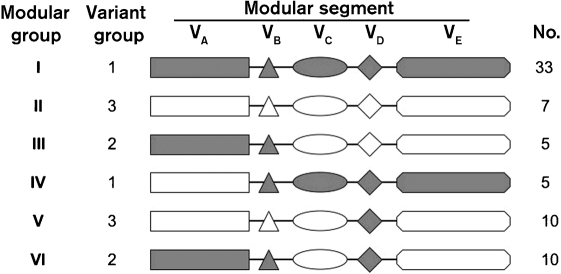Fig. 6.
Schematic representation of six fHbp modular groups deduced from phylogenetic analysis. Forty of the 70 proteins contained only α-type segments or β-type segments, and were designated modular groups I and II, respectively. The remaining 30 proteins were chimeras with different combinations of α (shown in grey) and β segments (shown in white), and could be assigned to one of four modular groups (III–VI). The relationship between the modular group and Masignani variant group designation, and the number of unique sequences observed within each fHbp modular group, are shown.

